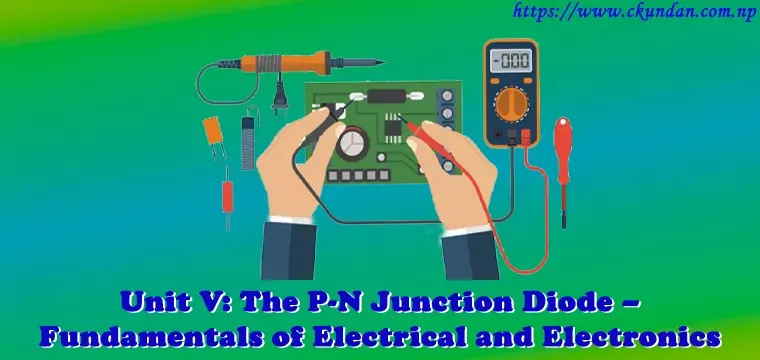A PN Junction Diode is one of the most basic semiconductor devices available, with the property of only flowing current in one direction. However, unlike a resistor, a diode does not act linearly with respect to applied voltage since it has an exponential current-voltage ( I-V ) connection, thus we can't just use an equation like Ohm's law to describe its operation.
As the width of the depletion layer around the PN junction shrinks, an appropriate positive voltage (forward bias) supplied between the two ends of the PN junction can supply free electrons and holes with the extra energy they need to pass the junction.
In this “The P-N Junction Diode – Fundamentals of Electrical and Electronics” you will learn about the following topics:
- Formation of a Space-Charge Region in a P-N Junction
- Energy Band Structure and Barrier Potential
- The P-N Junction under Forwarding Bias and Reverse Bias
- Characteristic Curve
- Diode Load Line
- Application of Diode
- Logic Gates: AND, OR, NOT
- Rectifiers: Half and Full Wave
- Zener Diode
- Characteristics of Zener Diode
- Applications of Zener Diode
This article The P-N Junction Diode – Fundamentals of Electrical and Electronics is contributed by Ritesh Thapa, a student of LA GRANDEE International College (LGIC).
==== Point to Note ====
This article The P-N Junction Diode – Fundamentals of Electrical and Electronics is contributed by Kabita Adhikari, a student of LA GRANDEE International College (LGIC).
If you like to contribute, you can mail us BCA Notes, BCA Question Collections, BCA Related Information, and Latest Technology Information at [email protected].
See your article appearing on BCA Notes (Pokhara University) main page with your designation and help other BCA Students to excel.
Please write comments if you find anything incorrect, or you want to share more information about the topic discussed above.
BCA 2nd Semester Fundamentals of Electrical and Electronics Notes Pdf:
- Unit I: Electric Circuit Elements
- Unit II: DC Circuits
- Unit III: Single Phase AC Circuit
- Unit IV: Semiconductor Materials
- Unit VI: Bipolar Junction Transistor (BJT)
- Unit VII: Junction Field Effect Transistor (JFET)
- Unit VIII: Metal Oxide Semiconductor Field Effect Transistor (MOSFET)
- Unit IX: The Operational Amplifier








0 Comments